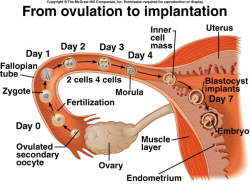Getting Prepped for Clinical Year
 Wednesday, April 8, 2020 at 01:00PM
Wednesday, April 8, 2020 at 01:00PM Cassandra Hoy from Ross University speaking about her recent externship experience.
Over the semester break I had the opportunity to extern in a private practice with the help of a Professional Development Fund scholarship from the RUSVM SAVMA board. This was my second time working with them to gain hands-on experience. Overall, it was a wonderful opportunity to see the kinds of cases I would expect to see in a general practice setting. Morning appointments were covered by one veterinarian while the other veterinarian handled the surgeries of the day. Both were very welcoming and happy to explain their methods of diagnostics and patient work-ups. A typical surgical caseload included a couple of neuters, spays, mass removals and 6-7 complete dentals with or without tooth extractions. Most of the room appointments related to gastrointestinal upset, itchy skin, wound lacerations, tumors, or wellness exams. I acted as the technician by assisting in restraining pets for their physical exams and got to see how each vet established a strong rapport with their clients.
Some of the more interesting cases involved a HBC Labrador showing neurological signs, an older dachshund who needed a canine tooth extraction, a geriatric shepherd mix with colorectal neoplasia and a rabbit neuter. Client communication was integral to ensuring everyone understood the plan going forward. Throughout my externship, I was given the opportunity to perform blood draws, insert intravenous catheters and place endotracheal tubes. As I get closer to 7th semester, I feel much better prepared for surgeries and moving on to clinical year!
 Clinics,
Clinics,  Externship,
Externship,  ross university in
ross university in  Experiences,
Experiences,  News
News 
